Complete Solutions to Single Correct Answer Type of chapter GEOMETRICAL OPTICS of Class 12 book with complete answers and questions
| Class 12 | PHYSICS |
| Chapter | GEOMETRICAL OPTICS |
| CENGAGE PHYSICS | Single Correct Answer Type |
| Number Of Questions | 50 |
| Academic Year | 2023-24 |
When a ray of light enters a glass slab from air.
View SolutionIn Young's double slit experiment, the sepcaration between the slits is halved and the distance between the slits and the screen is doubled. The fringe width is
View SolutionA glass prism of refractive index 1.5 is immersed in water (refractive index `4//3`) . A light beam normally on the face AB is totally reflected to reach on the face BC if
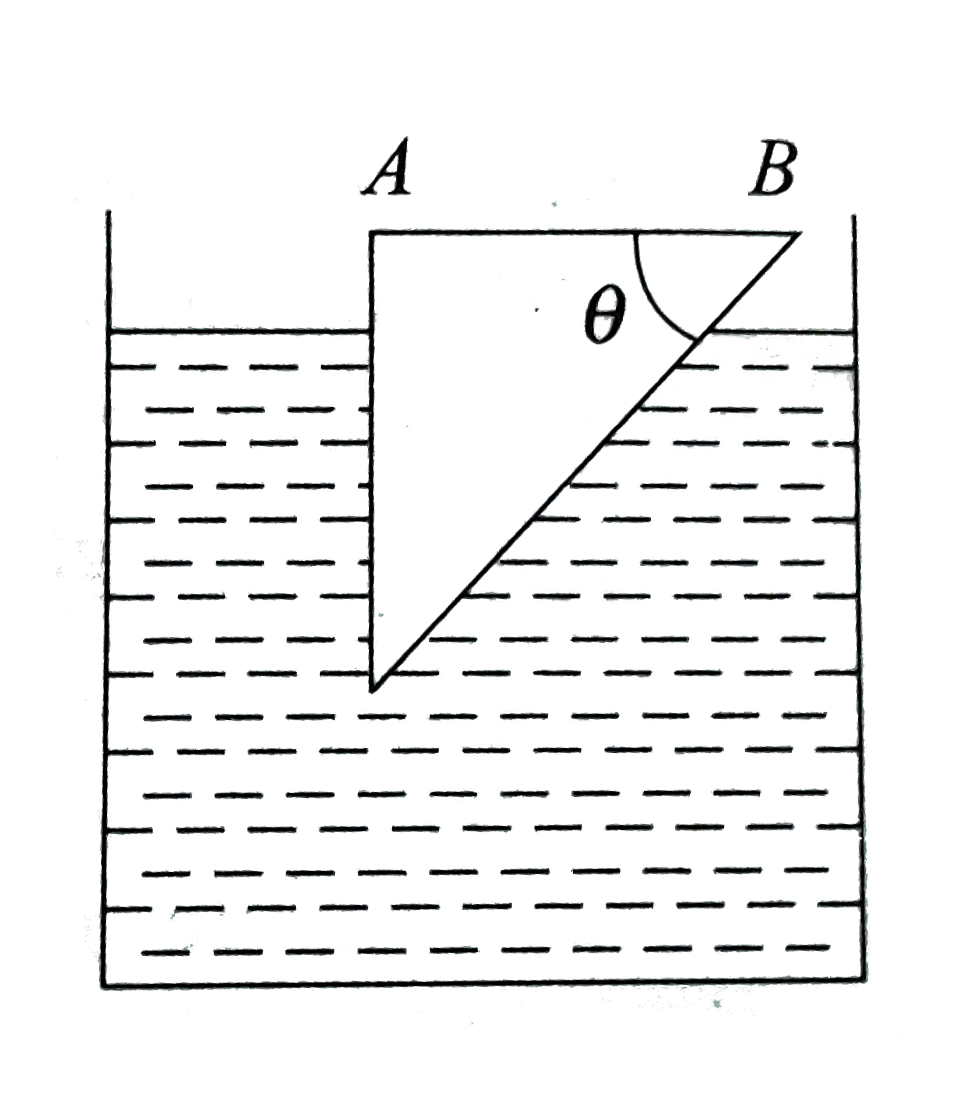
View SolutionA convex lens of focal length 40 cm in contact with a concave lens with a focal length 25 cm. The power of combination is
View Solution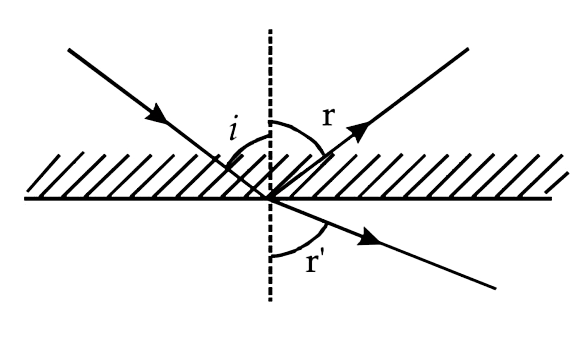
A ray of light from a denser medium strike a rarer medium at an angle of incidence I (see Fig). The reflected and refracted rays make as angle of 90degrees with each other. The angles of reflection and refraction are r and `r` The critical angle is
View SolutionTwo coherent monochromatic light beams of intensities I and 4I are superposed. The maximum and minimum possible intensities in the resulting beam are
View SolutionA short linear object of length b lies along the axis of a concave mirror of focal length fat a distance u from the pole of the mirror, what is the size of image?
View SolutionA beam of light consisting of red, green and blue colurs is incident on a right angled prism as shown in figure. The refractive indices of the maaterial of the prism for above red, green and blue wavelengths are 1.39, 1.44 and 1.47, respectivley .

View SolutionA thin prism `P_(1)` with angle `4^(@)` and made from glass of refractive index 1.54 is combined with another prism `P_(2)`, made of glass of refractive index 1.72 to produce dispersion without deviation. The angle of prism `P_(2)`
View SolutionTwo thin convex lenses of focal lengths `f_(1)` and `f_(2)` are separated by a horizontal distance `d(d lt f_(1)` and `d lt f_(2))` and their centers are displaced by a vertical separation as shown in the figure. A parallel beam of rays coming from left. Take the origin of coordinates O at the center of first lens.
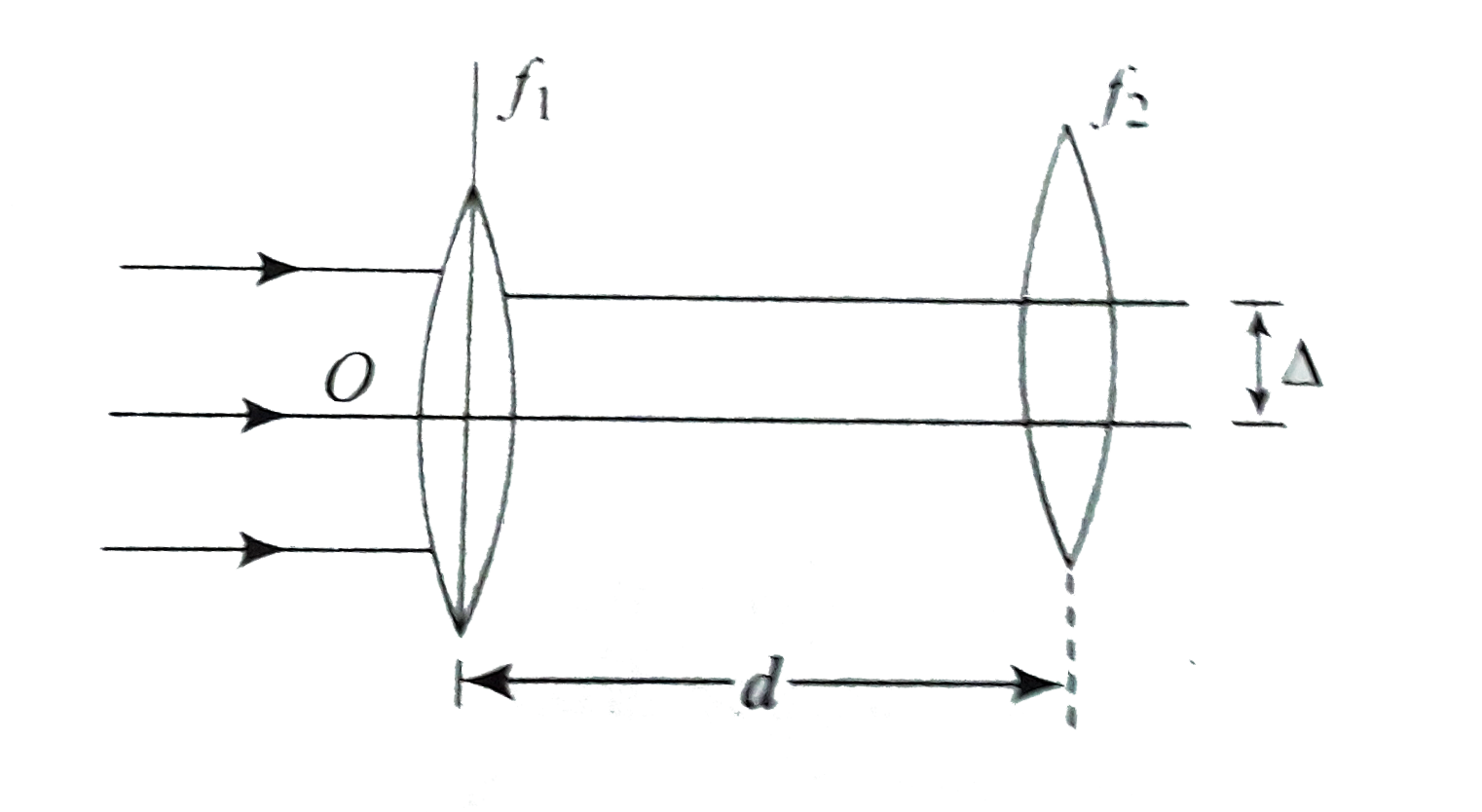
Q. Find the y-coordinate of the focal point of this lens system.
View SolutionSpherical aberration in a thin lens can be reduced by
View SolutionA beam of light of wavelength 600nm from a distance source falls on a single slit 1mm wide and a resulting diffraction pattern is observed on a screen 2m away. The distance between the first dark frings on either side of central bright fringe is
View Solution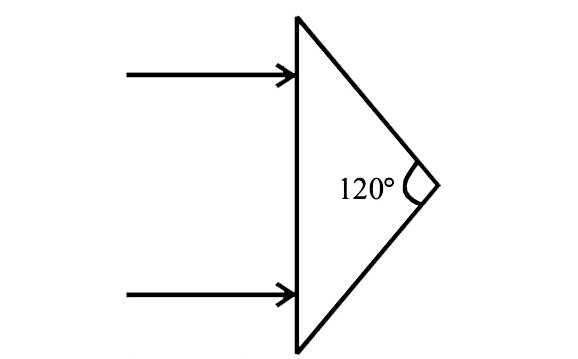
An isosceles prism of angle 120degree has a refractive index 1.44. Two parallel monochromatic rays enter the prism parallel to each other in air as shown. The rays emerge from the opposite faces
View SolutionA diminished image of an object is to be obtained on a screen 1.0 m from it. This can be achieved by appropriately placing
View SolutionThe focal lengths of the objective and the eyepiece of a compound microscope are 2.0cm and 3.0cm, respectively. The distance between the objective and the eyepiece is 15.0cm. Th final image formed by the eyepiece is at infinity. The two lenses are thin. The distance, in cm, of the object and the image produced by the objective, mesured from the objective lens, are respectively.
View SolutionAn eye specialist prescribes spectacles having a combination of a convex lens of focal length 40 cm in contact with a concave lens of focal length 25 cm. The power is this lens combination is
View SolutionA real image of a distant object is formed by a plano-convex lens on its principal axis. Spherical aberration is
View SolutionA concave mirror is placed on a horizontal table with its axis directed vertically upward. Let O be the pole of the mirror C its center of curvature and F is the focus. A point object is placed at C. It has a real image, also located at C. If the mirror is now filled with water, the image will be
View SolutionA spherical surface of radius of curvature R separates air (refractive index 1.0) from glass (refractive index 1.5). The center of curvature is in the glass. A point object P placed in air is found to have a real image Q in the glass. The ling PQ cuts the surface at a point O, and `PO=OQ`. The distance PO is equal to
View SolutionA concave lens of glass, refractive index 1.5, has both surfaces of same radius of curvature R. On immersion in a medium of refractive index 1.75, it will behave as a
View SolutionA hollow double concave lens is made of very thin transparent material. It can be filled with air or either of two liquids `L_(1)` or `L_(2)` having refractive indices `n_(1)` and `n_(2)`, respectively `(n_(2) gt n_(1) gt 1)`. The lens will diverge parallel beam of light if it is filles with
View SolutionA point source of light S, placed at a
distance L in front of the centre of a mirror of width d,
hangs vertically on a wall. A man walks in front of the
mirror along a line parallel to th mirror at a distane
2L form it as shown.The greatest distance over which
he can see the image of the light source in the mirror is
(a) `d//2` (b) d (c) 2d (d) 3 d.
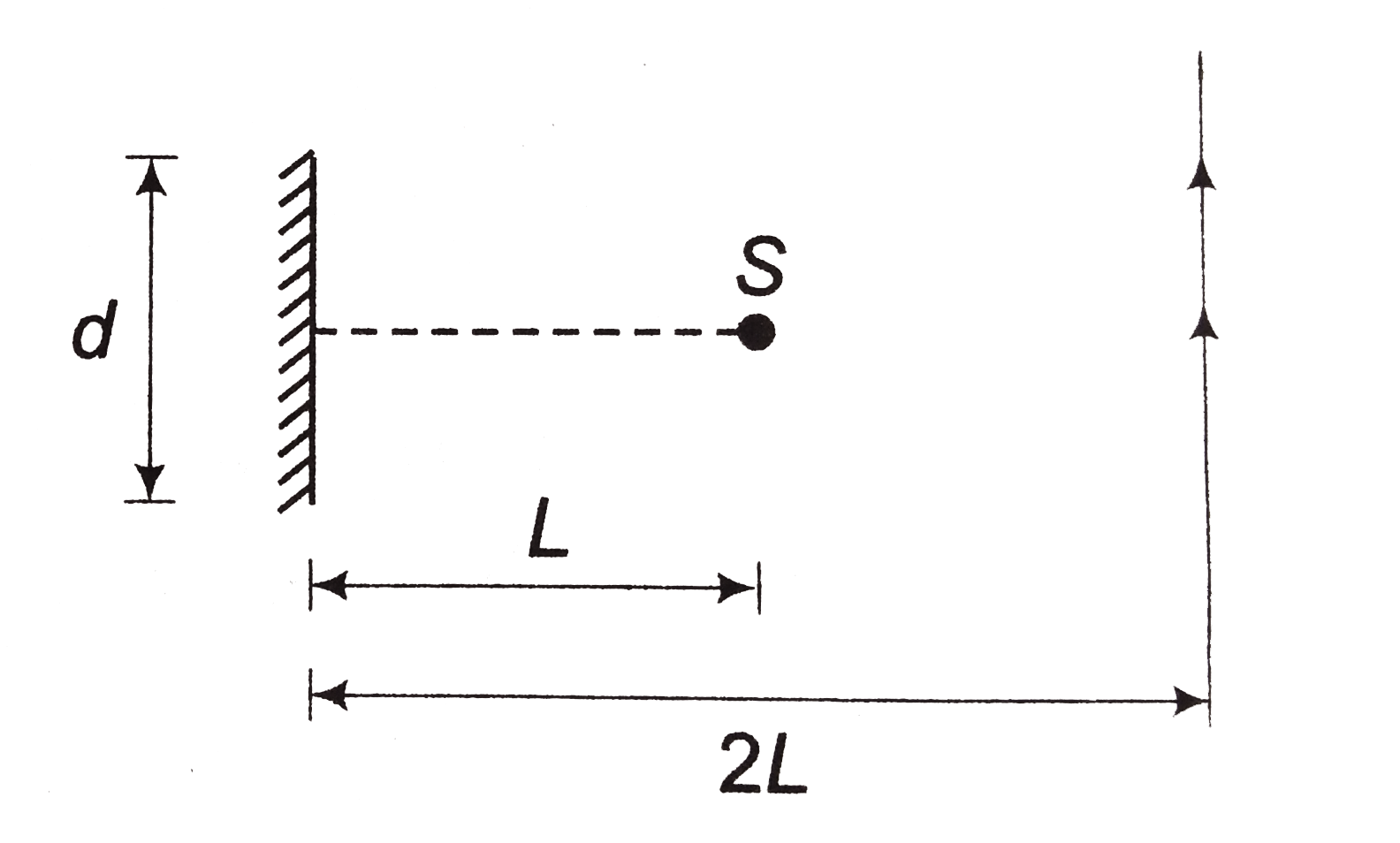
View SolutionA diverging beam of light from a point source S having divergence angle `alpha`, falls symmetrically on a glass slab as shown in the figure. The angles of incidence of the two extreme rays are equal. If the thickness of the glass slab is t and the refractive index n, then the divergence angle of the emergent beam is

View SolutionA rectangular slab ABCD, of refractive index `n_1` , is immersed in water of refractive index `n_2(n_1 lt n_2)`. A ray of light is incident at the surface AB of the slab as shown in Fig. Find the maximum value of angle of incidence `alpha_(max)`, such that the ray comes out only from the other surface CD.
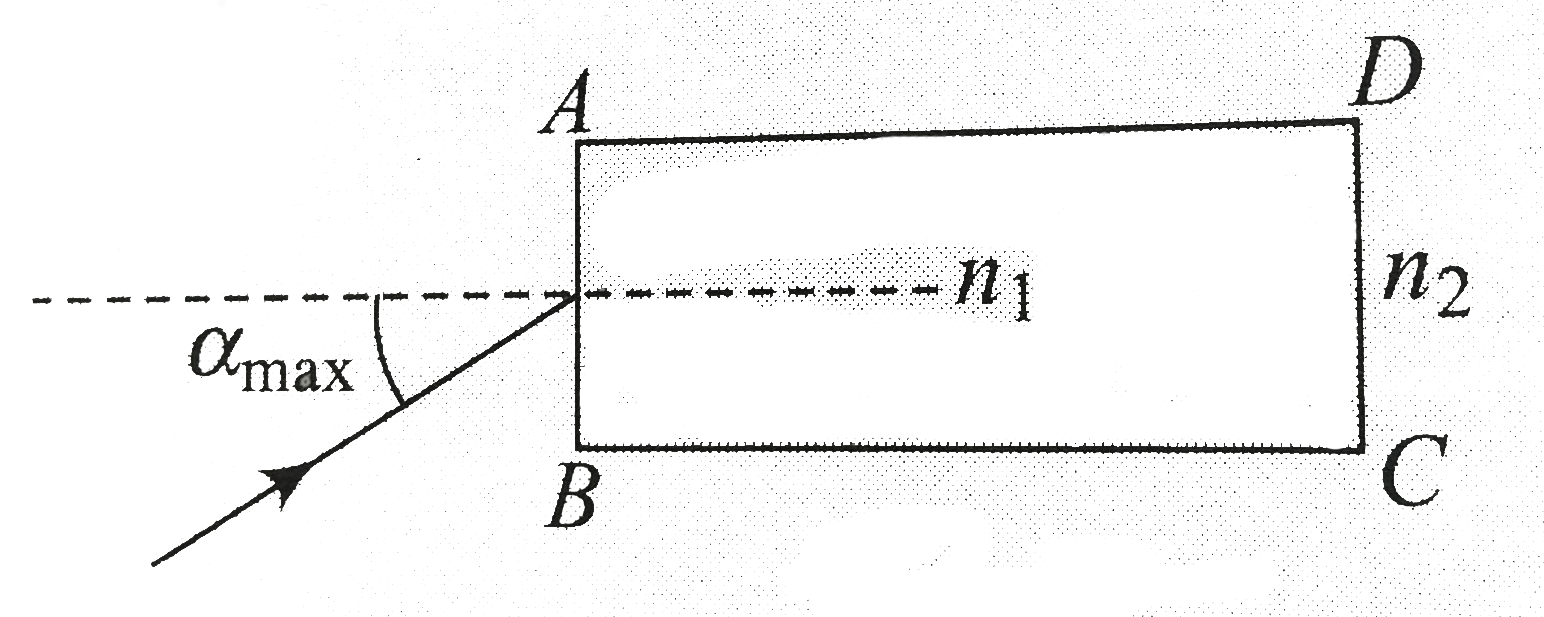
View SolutionIn a compound microscope, the intermediate image is
View SolutionA ray of light passes through four transparent media with refractive indices `mu_(1),mu_(2),mu_(3), and mu_(4)` as shown in figure. The surfaces of all media are paralle. If the emerent ray CD is parallel to the incident ray AB, we must have
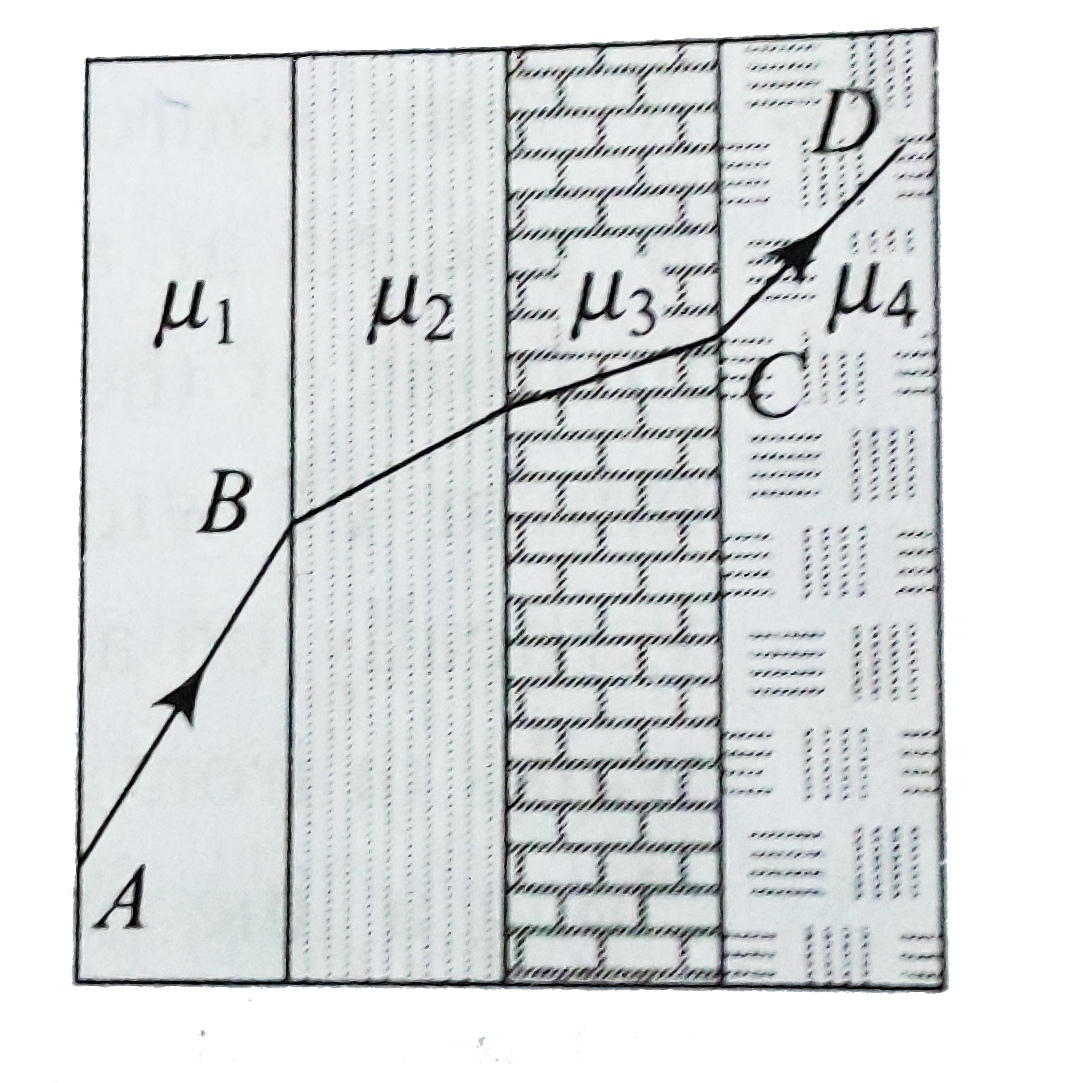
View SolutionA given ray of light suffers minimum deviation in an equilateral prism P. Additional prism Q and R of identical shape and of the same material as P are now added as shown in figure. The ray will now suffer
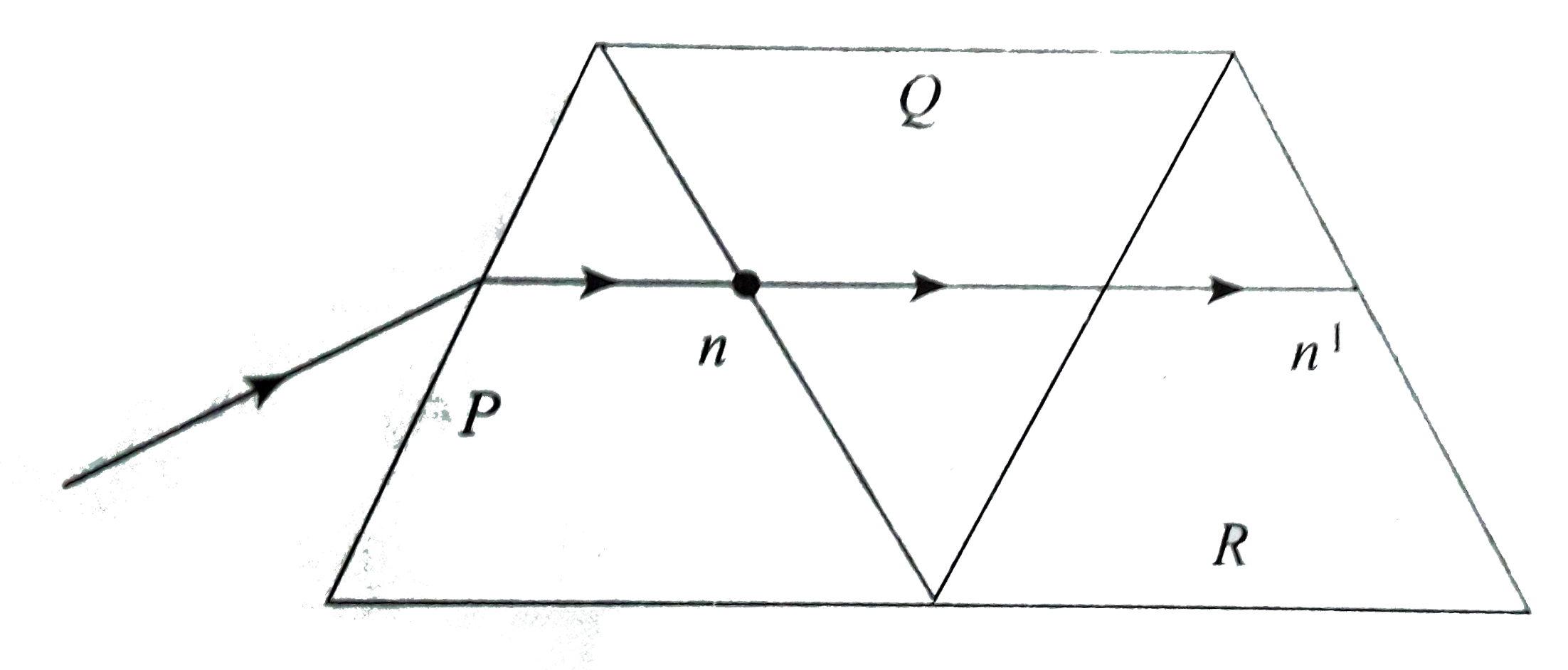
View SolutionAn observer can see through a pin-hole the top end of a thin`
` rod of height h,placed as shown in the figure. The beaker height is 3h and its radius h. When the beaker is filled with a liquid up to a height 2h, he can see the lower end of the rod. Then, the refractive index of the liquid is

(a) `5/2` , (b) `sqrt((5)/(2))` , (c) `sqrt((3)/(2))` , (d) `(3)/(2)`
View SolutionWhich one of the following sperical lenses does not exhibit dispersion? The radii of curvature of the surfaces of the lenses are as given in the diagrams.
`R_(1)!=R_(2)`
View SolutionTwo plane mirrors A and B are aligned parallel to each other as shown in the figure. A light ray is incident at an angle of `30^(@)` at a point just inside one end of A. The number of times the ray undergoes reflections (including the first one) before it emerges out is
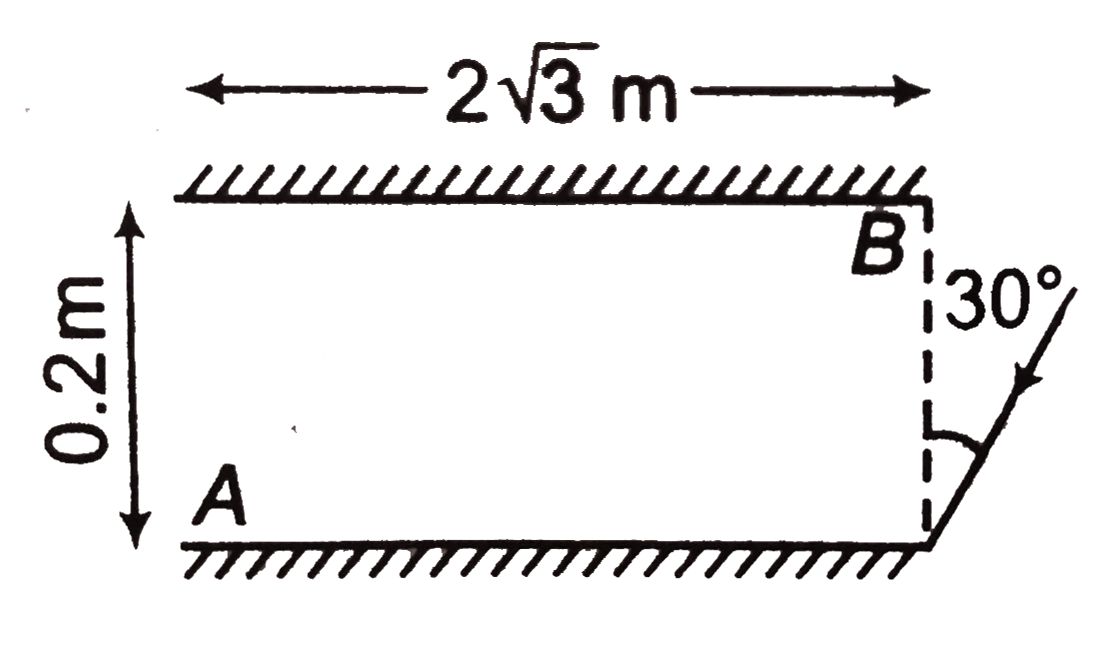
View SolutionThe size of the image of an object, which is at infinity, as formed by a convex lens of focal length 30 cm is 2 cm. If a concave lens of focal length 20 cm is placed between the convax lens and the image at a distance of 26 cm from the convex lens, calculate the new size of the image.
View SolutionA ray of light is incident at the glass-water interface at an angle i. It merges finally parallel to the surface of water. Then, the value of `mu_(g)` would be
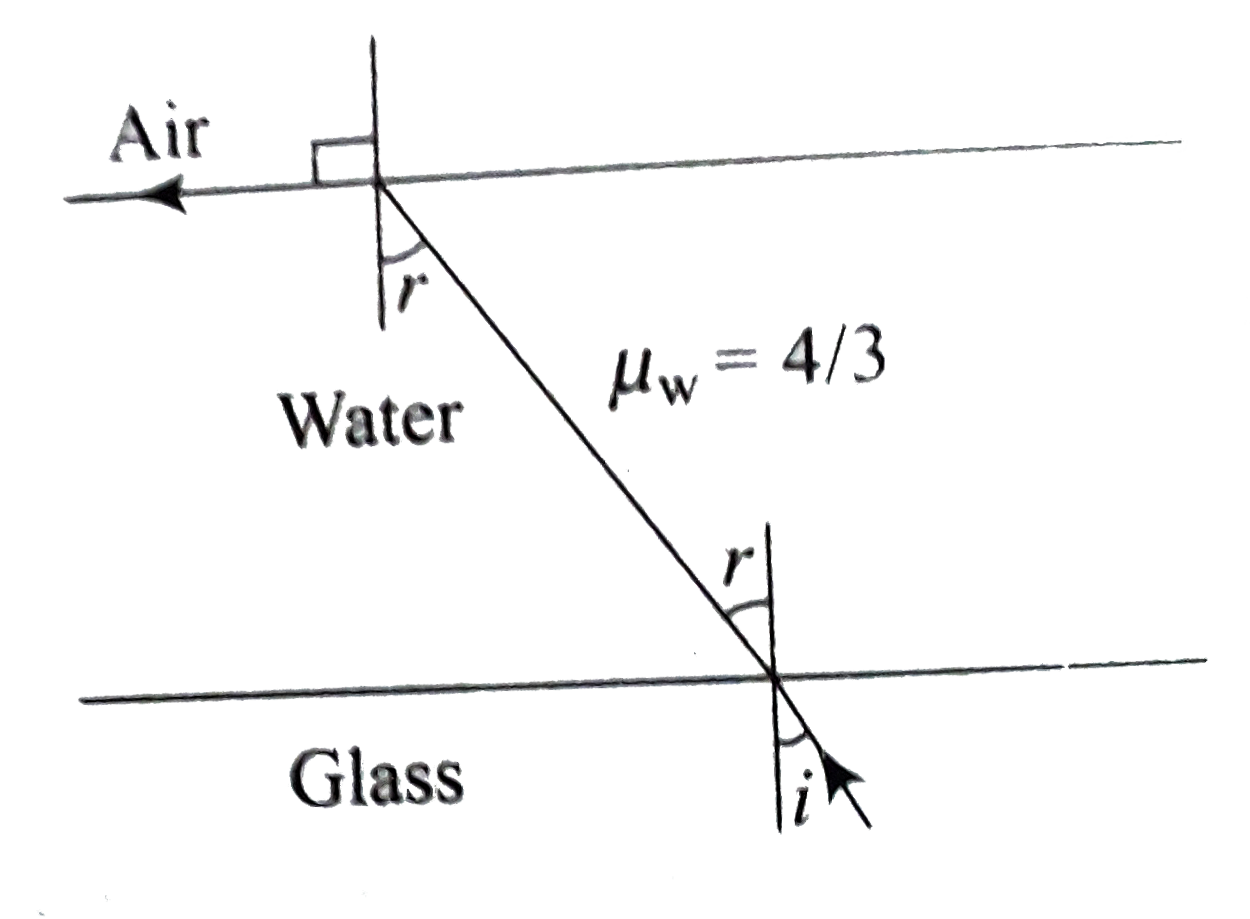
View SolutionA beam of white light is incident on the glass-air interface from glass to air such that green light just suffers total internal reflection. The colors of the light which will come out to air are
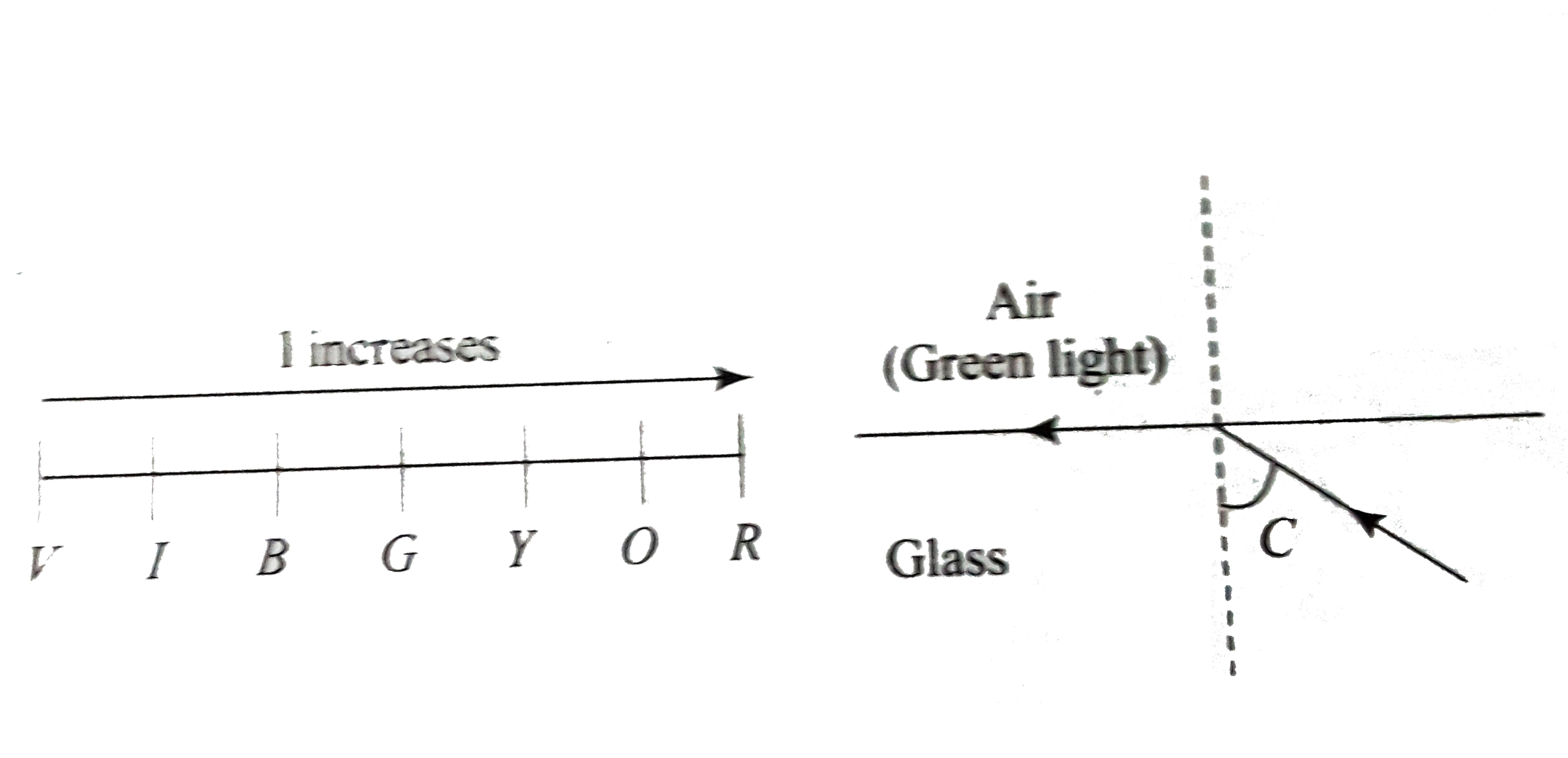
View SolutionAn equilateral prism is placed on a horizontal surface. A ray PQ is incident onto it. For minumum deviation,
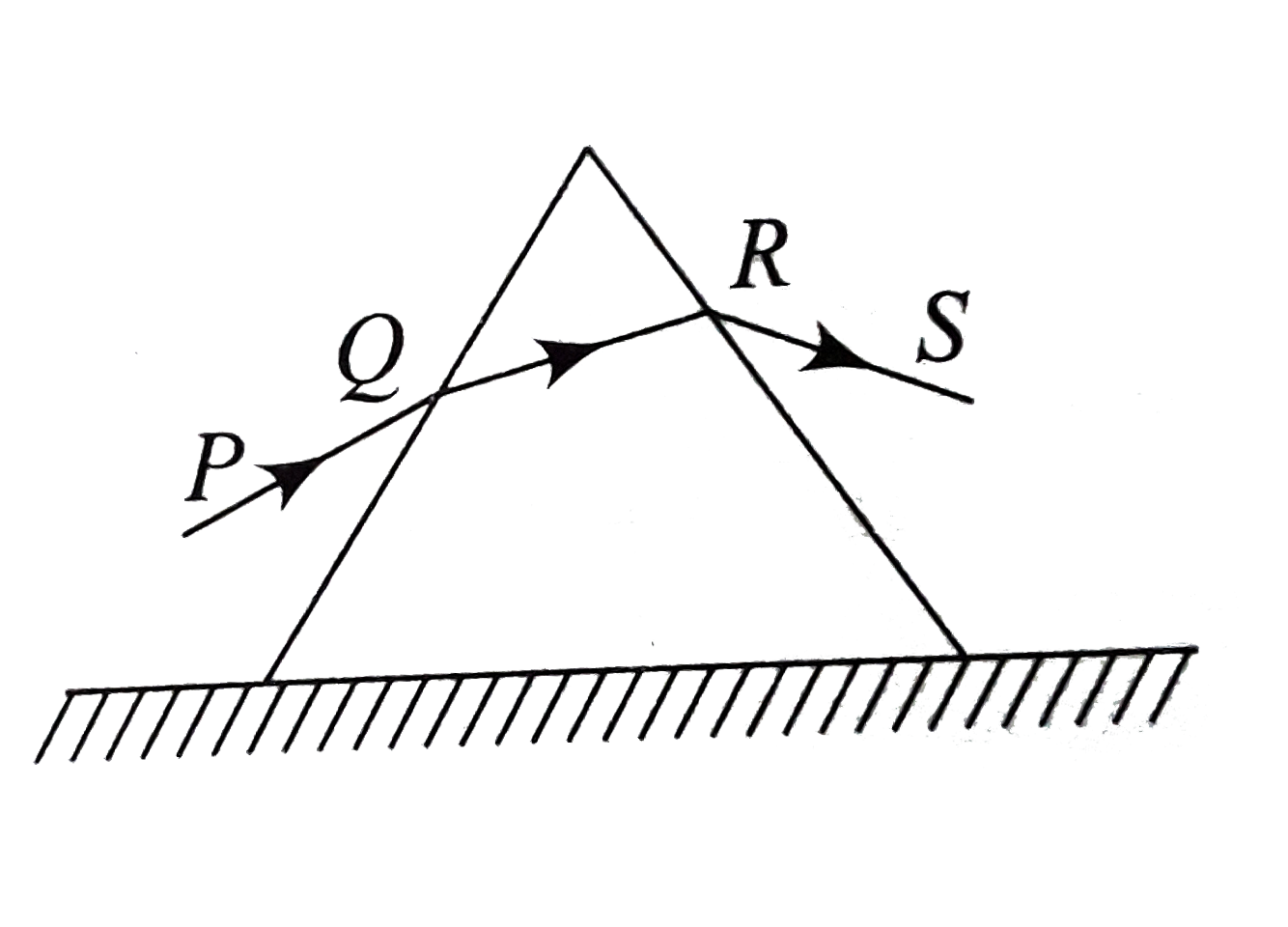
View SolutionA point object is placed at the center of a glass sphere of radius 6cm and refractive index 1.5. The distance of virtual image from the surface is
View SolutionA convex lens is in contact with a concave lens. The magnitude of the ration of their focal lengths is `2//3`. Their equivalent focal length is 30cm. What are their individual focal lengths?
View SolutionA container is filled with water `(mu=1.33)` upto a height of 33.25cm. A convex mirror I s placed 15cm above the water level and image of an object placed at the bottom is formed 25cm below the water level. Focal length of the mirror is

View SolutionFocal length of the plano-convex lens is 15cm. A small object is placed at A as shown in figure. The plane surface is silvered. The image will form at
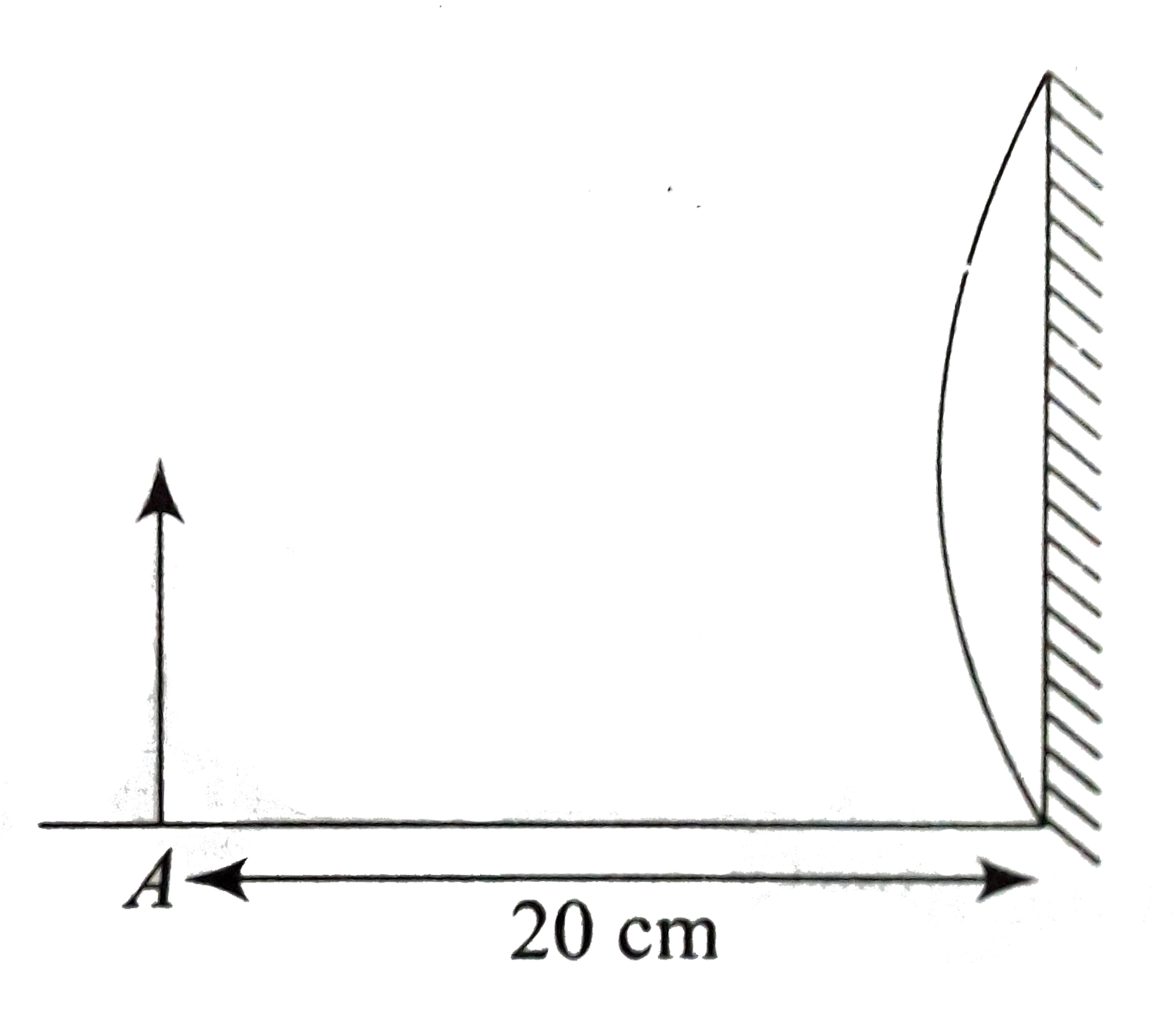
View SolutionThe graph shown relationship between object distance and image distance for a equiconvex lens. Then focal length of the lens is `
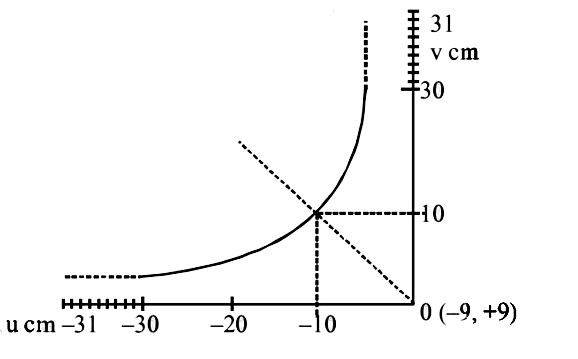
View SolutionA biconvex lens of focal length f forms a circular image of radius r of sun is focal plane. Then, which option is correct?
View SolutionA ray of light travelling in water is incident on its surface open to air. The angle of incidence is `theta`, which is less than the critical angle. Then there will be
View SolutionIn an experiment to determine the focal length `(f)` of a concave mirror by the `u-v` method, a student places the object pin A on the principal axis at a distance x from the pole P. The student looks at the pin and its inverted image from a distance keeping his/her eye in line with PA. When the student shifts his/her eye towards left, the image appears to the right of the object pin. Then,
View SolutionRays of light from Sunn falls on a biconvex lens of focal length f an the circular image of Sun of radius r is formed on the focal plane of the lens. Then,
View SolutionA light beam is traveling from Region I to region IV (refer figure). The refractive indices in Region I, II, III, and IV are `n_(0), n_(0)//2,n_(0)//6 and n_(0)//8` , respectively. The angle of incidence `theta` for which the beam just misses entering Region IV is
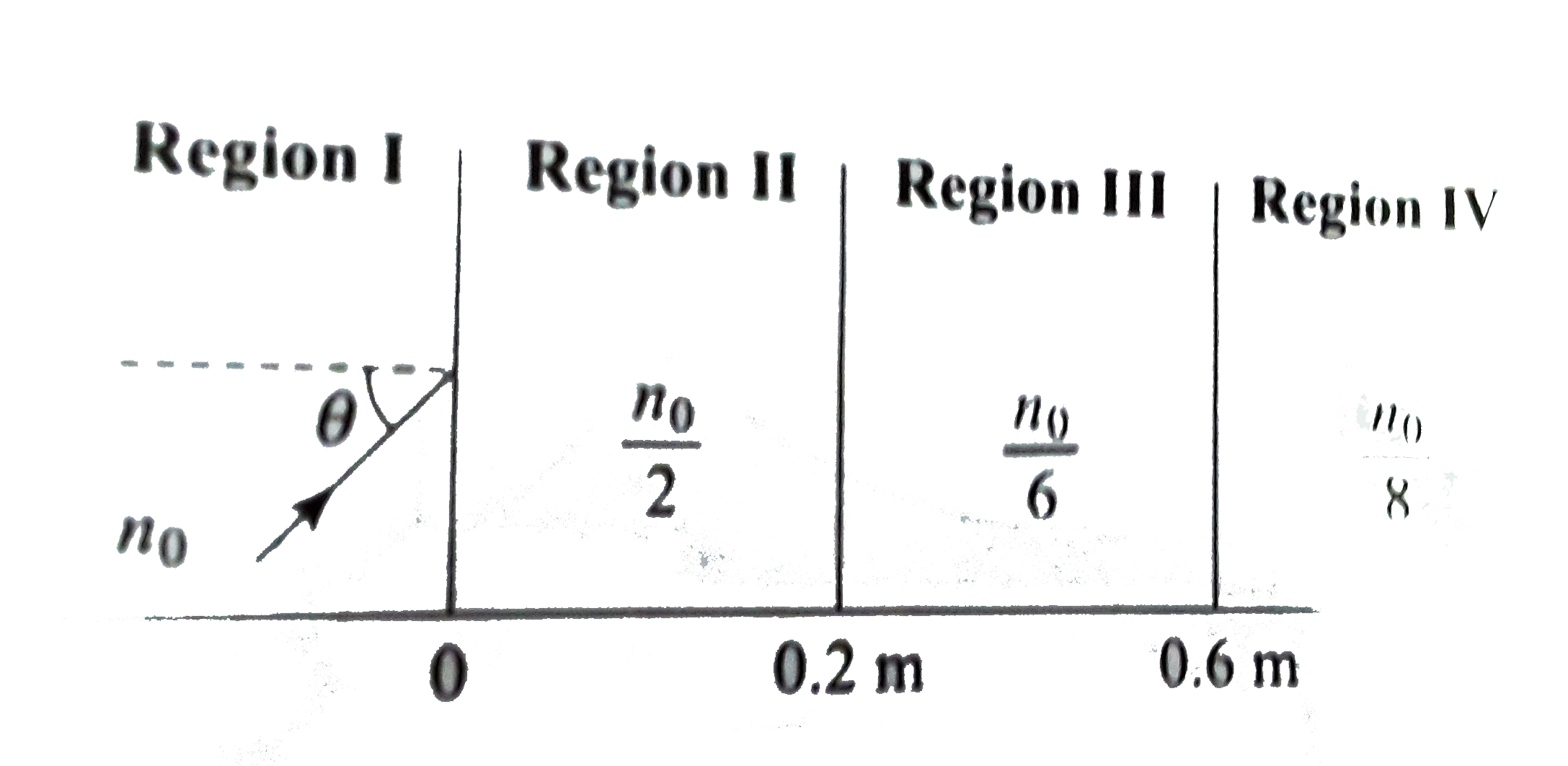
View SolutionTwo beam of red and violet color are made to pass separately through a prism (angle of the prism is `60^(@)`). In the positionof minimum deviationi, the angle of refraction will be
View SolutionA ball is dropped from a height of 20m above the surface of water in a lake. The refractive index of water is `4//3`. A fish inside the lake , in the line fall of the ball, is looking at the ball. At an instant when the balll is 12.8m above the water surface, the fish sees the speed of ball as .
View SolutionA biconvex lens of focal length 15cm is in front of a plane mirror. The distance between the lens and the mirror is 10cm. A small object is kept at distance of 30cm from the lens. The final image is
View SolutionA bi-convex lens is formed with two thin plano-convex lenses as shown in the figure. Refreactive index n of the first lens is `1.5` and that of the second lens is `1.2`. Both the curved surface are of the same radius of curvature R = 14 cm. For this bi-convex lens, for an object distance of 40 cm, the image distance will be

View SolutionA ray of light travelling in the direction `(1)/(2)``(hati,+sqrt3hatj)` is incident on a plane mirror. After reflection, it travels along the direction `(1)/(2)(hati-sqrt3hatj)` . The angle of incidence is
View SolutionThe image of an object, formed by a plano-convex lens at a distance of 8m behind the lens, is real and is one-third the size of the object. The wavelength of light inside the lens is `(2)/(3)` times the wavelength is free space. The radius of the curved surface of the lens is
View Solution
Single Correct Answer Type questions and complete solutions for chapter GEOMETRICAL OPTICS of CENGAGE PHYSICS (ENGLISH) of Class 12